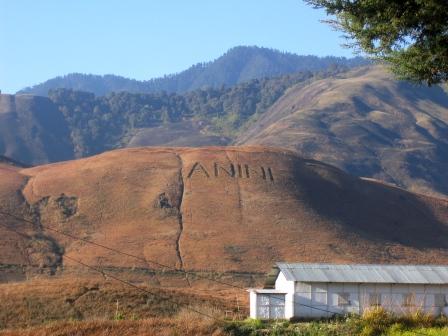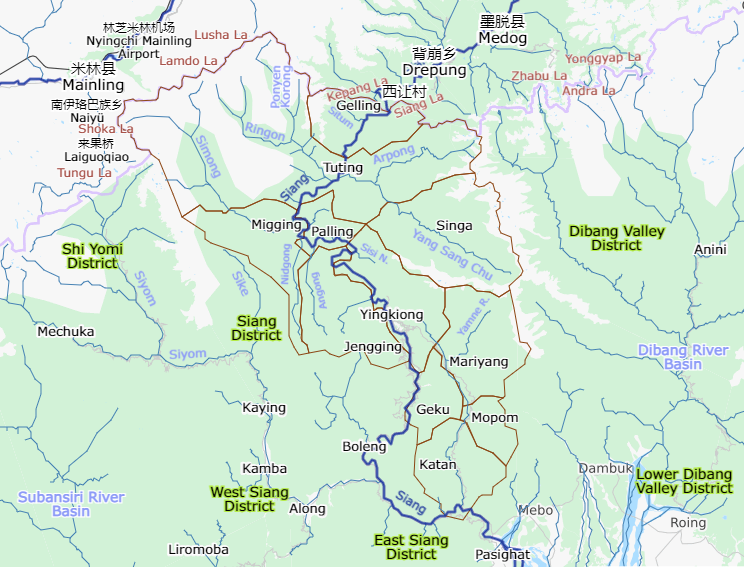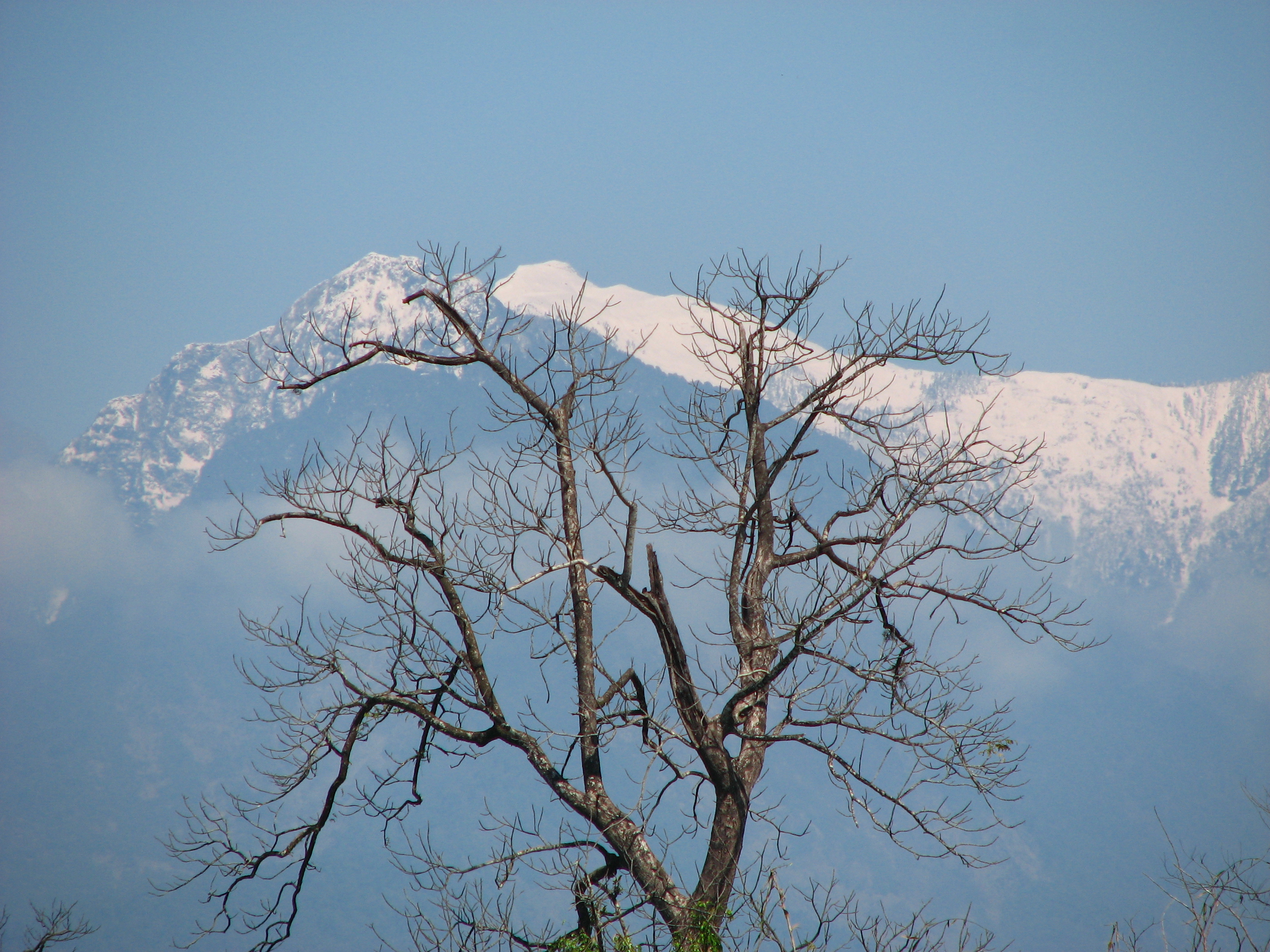|
Idu Mishmi Language
The Idu Mishmi language () is a small language spoken by the Mishmi people in Dibang Valley district, Lower Dibang Valley district, Lohit district, East Siang district, Upper Siang district of the Indian state of Arunachal Pradesh and in Zayü County of the Tibet Autonomous Region, China. There were 8569 speakers in India in 1981 and 7000 speakers in China in 1994. It is considered an endangered language. Locations In China, Idu Mishmi is spoken in Xiba village 西巴村, which has just over 40 residents and is located at the foot of Xikong Mountain 习孔山. Xiba village is located 10 kilometers from the nearest administrative center, namely Migu village 米古村 (Jiang 2005:4). The Idu live in the Danba River 丹巴江 and E River 额河 watersheds in Zayü County, Tibet. They are officially classified by the Chinese government as ethnic Lhoba people. In India, the Idu are found in Arunachal Pradesh. Script The Idu Mishmi people did not usually have a script of their own. ... [...More Info...] [...Related Items...] OR: [Wikipedia] [Google] [Baidu] |
Wax Figures
A wax sculpture is a depiction made using a waxy substance. Often these are effigies, usually of a notable individual, but there are also death masks and scenes with many figures, mostly in relief. The properties of beeswax make it an excellent medium for preparing figures and models, either by modeling or by casting in molds. It can easily be cut and shaped at room temperature, melts at a low temperature, mixes with any coloring matter, takes surface tints well, and its texture and consistency may be modified by the addition of earthy matters and oils or fats. When molten, it is highly responsive to impressions from a mold and, once it sets and hardens, its form is relatively resilient against ordinary temperature variations, even when it is cast in thin laminae. These properties have seen wax used for modelling since the Middle Ages and there is testimony for it having been used for making masks (particularly death masks) in ancient Rome. The death masks of illustrious anc ... [...More Info...] [...Related Items...] OR: [Wikipedia] [Google] [Baidu] |
Digaro Languages
The Digaro (Digarish), Northern Mishmi (Mishmic), or Kera'a–Tawrã languages are a small family of possibly Sino-Tibetan languages spoken by the Mishmi people of southeastern Tibet and Arunachal Pradesh. The languages are Idu and Taraon (Digaro, Darang). External relationships They are not related to the Southern Mishmi Midzu languages, apart from possibly being Sino-Tibetan. However, Blench and Post (2011) suggests that they may not even be Sino-Tibetan, but rather an independent language family of their own. Blench (2014) classifies the Digaro languages as part of the Greater Siangic group of languages. Names Autonyms and exonyms for Digaro-speaking peoples, as well as Miju (Kaman), are given below (Jiang, et al. 2013:2-3). Registers Idu, Tawra, Kman, and Meyor all share a system of multiple language registers, which are (Blench 2016): #ordinary speech #speech of hunters: lexical substitution, the replacement of animal names and others by special lexical forms, ... [...More Info...] [...Related Items...] OR: [Wikipedia] [Google] [Baidu] |
Midu (dialect)
Midu or MIDU may refer to: *Midu County, Yunnan, China * Midu language, a possibly Sino-Tibetan language spoken in border regions of India and China * Midu (actress) (born 1989), Vietnamese actress *MIDU, ticker symbol for the Direxion Daily Mid Cap Bull 3X Shares ETF *Midu, the main character of the Pakistani television series ''Anokha Ladla'' See also *Midus, a type of Lithuanian mead *Midou The Midou or Midour (/midu/, oc, Midor) is the left precursor of the Midouze, in the Southwest of France. Geography The Midou rises in Armagnac, in the Gers département. It joins the Douze in Mont-de-Marsan to constitute the Midouze, a tri ..., a river in France * Meedhoo (other) {{disambiguation ... [...More Info...] [...Related Items...] OR: [Wikipedia] [Google] [Baidu] |
Mithu (dialect)
Mithu may refer to: * Mithu Alur (born 1943), Indian social worker * Mithu Chakrabarty, Indian Bengali film and television actress * Mithu Mukherjee (cricketer), former Indian cricketer * Mithu Mukherjee (actress) (born 1953), former actress acting in Bengali and Hindi films * Mithu Sen Mithu Sen is an Indian conceptual artist. Born in West Bengal in 1971. Early life and education Sen was born in 1971 in West Bengal and obtained Bachelor's and Master's degrees in painting from Kala Bhavan at Visva-Bharati University in Santinik ... (born 1971), Indian conceptual artist See also * Mitu (other) * Mittu (other) * Mitsu (other) {{disambiguation, given name ... [...More Info...] [...Related Items...] OR: [Wikipedia] [Google] [Baidu] |
Anini
Anini is the headquarters of the Dibang Valley district in the state of Arunachal Pradesh in Northeast India. Anini was also the district headquarters of the undivided Dibang Valley district. Most of this location's population consists of the Idu Mishmi tribal people. Due to its remote location, Anini remains a small and underdeveloped town. However, it still has basic road and air links to the rest of India. The town is fully dependent on the nearest major settlement, Roing, which is in the Lower Dibang Valley District, for most commercial needs. The Anini sub-division consists of six administrative circles— Anini, Mipi, Dambeun, Etalin, Anelih, and Arzoo. Etymology While there is no definite answer, Anini's name may have come from Inini or Innini. Historical maps of Arunachal Pradesh from times before the Lower Dibang Valley district were carved out of the Dibang Valley District in 2001. Before Roing was established, these maps indicate the capital of the Dibang Valley Di ... [...More Info...] [...Related Items...] OR: [Wikipedia] [Google] [Baidu] |
Tibetan Script
The Tibetan script is a segmental writing system (''abugida'') of Brahmic scripts, Indic origin used to write certain Tibetic languages, including Lhasa Tibetan, Tibetan, Dzongkha, Sikkimese language, Sikkimese, Ladakhi language, Ladakhi, Jirel language, Jirel and Balti language, Balti. It has also been used for some non-Tibetic languages in close cultural contact with Tibet, such as Thakali language, Thakali. The printed form is called uchen script while the hand-written cursive form used in everyday writing is called umê script. This writing system is used across the Himalayas, and Tibet. The script is closely linked to a broad ethnic Tibetan identity, spanning across areas in India, Nepal, Bhutan and Tibet. The Tibetan script is of Brahmic scripts, Brahmic origin from the Gupta script and is ancestral to scripts such as Meitei script, Meitei, Lepcha script, Lepcha,Daniels, Peter T. and William Bright. ''The World's Writing Systems''. New York: Oxford University Press, 1996. ... [...More Info...] [...Related Items...] OR: [Wikipedia] [Google] [Baidu] |
Endangered Language
An endangered language or moribund language is a language that is at risk of disappearing as its speakers die out or shift to speaking other languages. Language loss occurs when the language has no more native speakers and becomes a "dead language". If no one can speak the language at all, it becomes an "extinct language". A dead language may still be studied through recordings or writings, but it is still dead or extinct unless there are fluent speakers. Although languages have always become extinct throughout human history, they are currently dying at an accelerated rate because of globalization, imperialism, neocolonialism and linguicide (language killing). Language shift most commonly occurs when speakers switch to a language associated with social or economic power or spoken more widely, the ultimate result being language death. The general consensus is that there are between 6,000 and 7,000 languages currently spoken. Some linguists estimate that between 50% and 90% of ... [...More Info...] [...Related Items...] OR: [Wikipedia] [Google] [Baidu] |
Upper Siang District
Upper Siang (Pron:/ˈsjæŋ or ˈsɪæŋ/) is an administrative district in the state of Arunachal Pradesh in India. It is the fourth least populous district in the country (out of 640). History The majority of the people are of the Adi tribe while the Memba, Khamba tribe also exists there. Part of the area was controlled by the Tibetan Kingdom of Powo when streams of Tibetan pilgrims searching for one of the 'hidden lands' or beyul ( bo, sbas-yul) referred to in the prophecies of Guru Rinpoche in the East Himalayas from the mid-seventeenth century came south over the Doshong La pass, to seek the particular location of one of these earthly paradises called Padma bkod (written variously Pema köd, Pemakö and Pemako), literally 'Lotus Array' in the region. The region became administered by British India with the Simla Accord of 1914 and the demarcation of the McMahon Line, though China considers it part of South Tibet. The district was formed in 1999 when it was split from Ea ... [...More Info...] [...Related Items...] OR: [Wikipedia] [Google] [Baidu] |
Lohit District
Lohit () is an administrative district in the state of Arunachal Pradesh in India. The district headquarters is located at Tezu. As of 2011 it is the third most populous district of Arunachal Pradesh, after Papum Pare and Changlang. Etymology It was known earlier as the Mishmi Hills. The district is named after the Lohit River and consists of the river valley and hills/mountains to the North and South. History During medieval times, the present district was under the control of the rulers of the Chutiya Kingdom. The Chutiya rulers controlled the area from the early 13th century to the 16th century and during the 19th century, it became one of the last territories to be brought under British control after the punitive Abor and Mishmi Expedition in the first decade of 20th century. In June 1980, Dibang Valley district was split from Lohit (and has since been bifurcated again to create the new Lower Dibang Valley district). On 16 February 2004, Anjaw district was carved out from t ... [...More Info...] [...Related Items...] OR: [Wikipedia] [Google] [Baidu] |
Lower Dibang Valley District
The Lower Dibang Valley district (Pron:/dɪˈbæŋ/) is an administrative district in the state of Arunachal Pradesh in northeastern India. It is the tenth least populous district in the country. History In June 1980, the Dibang Valley district was created from part of the Lohit district. On 16 December 2001, the Dibang Valley district was bifurcated into Dibang Valley district and Lower Dibang Valley district. Geography and timeline The headquarters of the district is Roing. Before it was carved out of the district on 16 December 2001, Anini housed the district headquarters. Transport The proposed Arunachal Pradesh Frontier Highway goes along the McMahon Line, and will pass through the Lower Dibang Valley district. An alignment map can be seehereanhere It will intersect with the proposed East-West Industrial Corridor Highway. Divisions There are two Arunachal Pradesh Legislative Assembly constituencies located in this district: Dambuk and Roing. Both are part of the Aruna ... [...More Info...] [...Related Items...] OR: [Wikipedia] [Google] [Baidu] |



